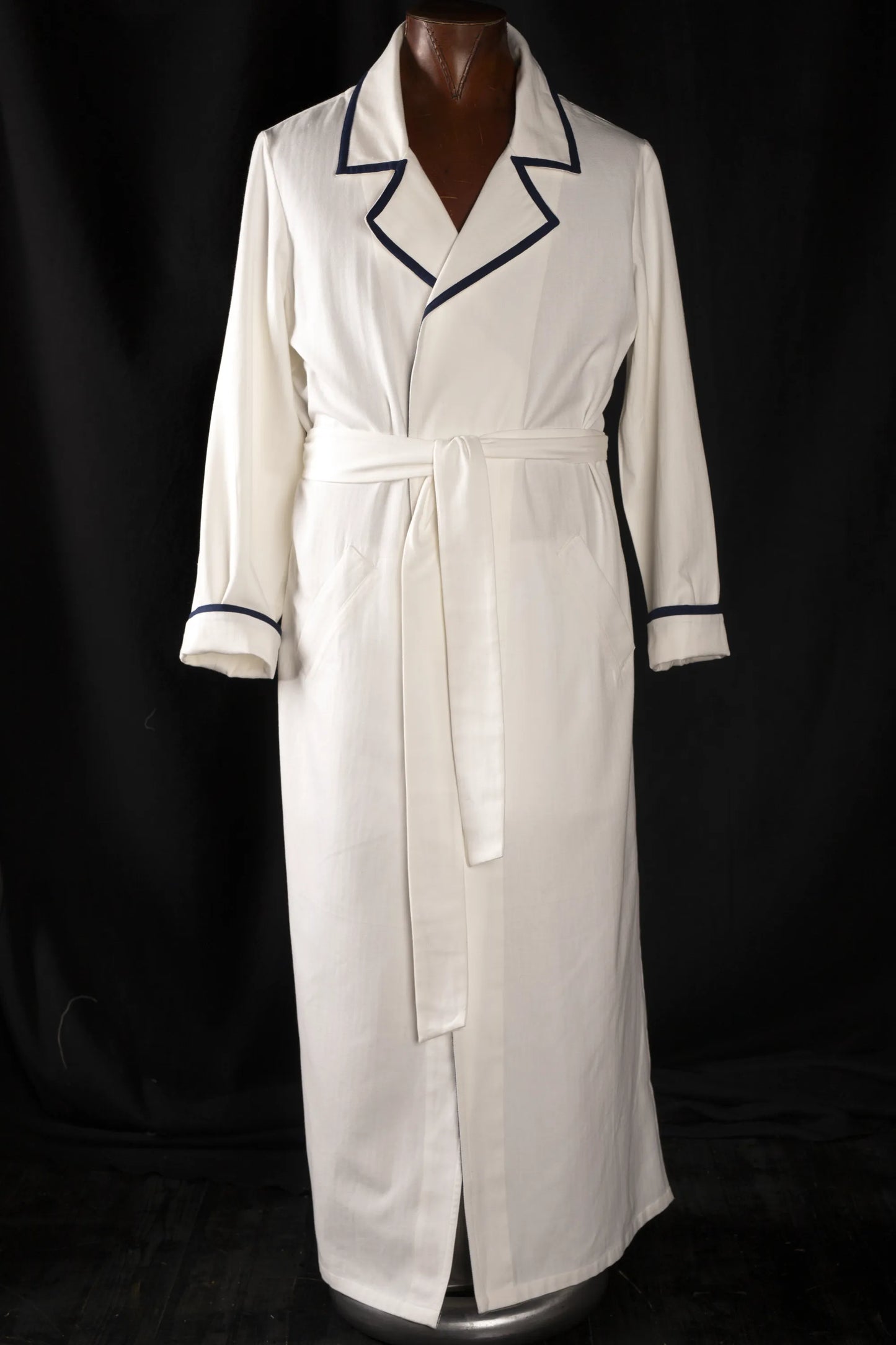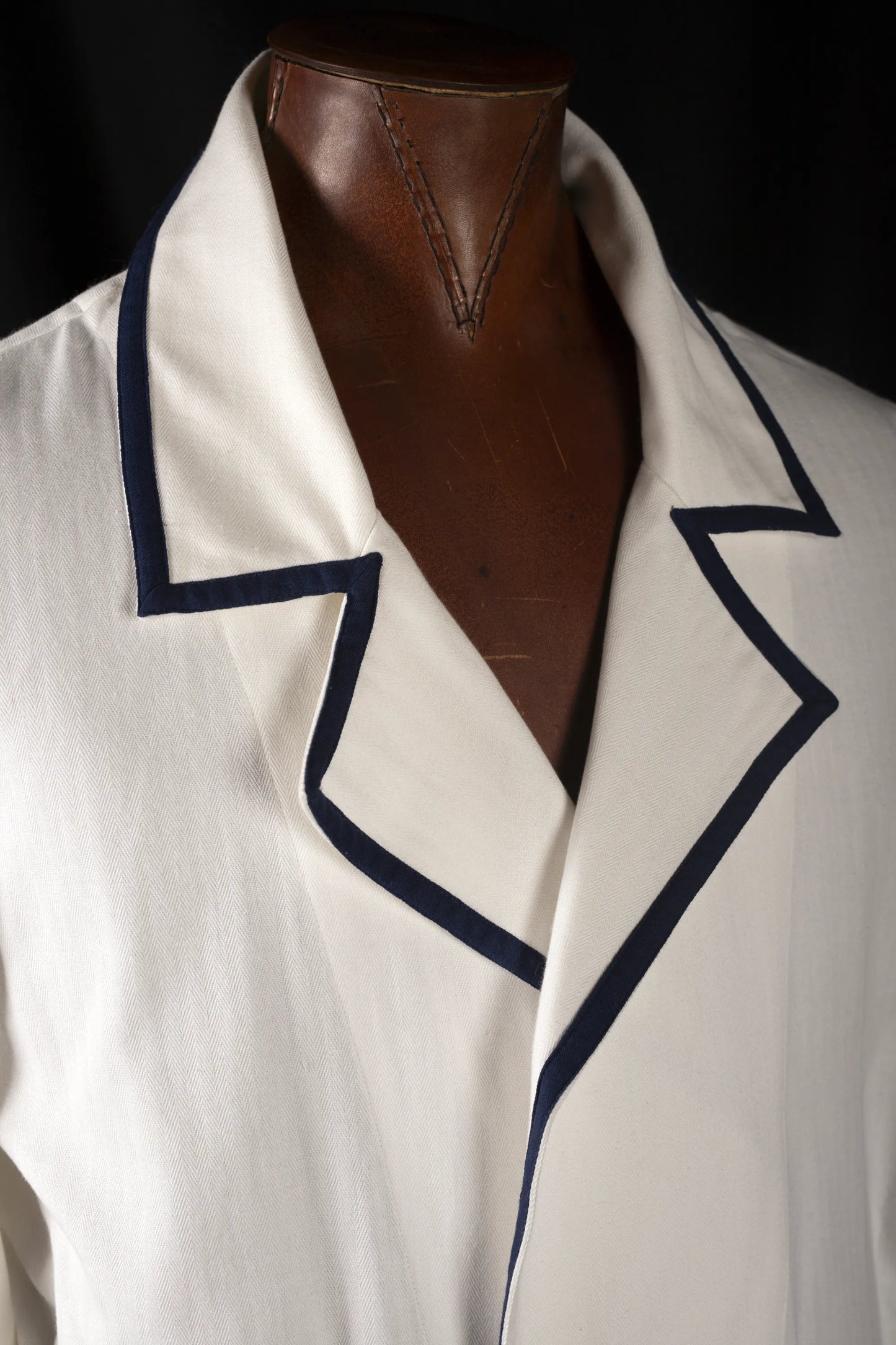DECK-GOWN
WHITE with navy taping
100% COTTON Herringbone-Thick
DECK-GOWN WHITE with navy taping 100% COTTON Herringbone-Thick
Couldn't load pickup availability
Long wrap gown with belt fastening and wide sleeves, heavier than interior robes. Designed as an outer layer against spray and wind, falling below the knee for warmth. Today it functions as a house coat for cool evenings or layered wear in damp weather. On transatlantic crossings it was worn on deck, where cold, mist, and sea spray required full coverage that could be adjusted quickly with a belt. Layering over pyjamas or shirts allowed protection against shifting temperatures while exposed to the Atlantic air.
Atlantic passages from Le Havre to Cayenne took weeks in the early 20th century. Ships crossed variable zones: cold North Atlantic waters, trade winds of the tropics, and humid equatorial calms. Passengers on deck faced chill air, wet spray, and wind. Long coats and gowns provided insulation and protection before synthetic fabrics, relying on cotton and wool layering.
DETAILS
DETAILS
Taping, a functional and decorative element, has been used in garments for centuries, often for reinforcement
Our article number:9175
MATERIAL
MATERIAL
100%ᴾᵁᴿᴱ Southern-Indian COTTON (as in the 𝑜𝑟𝑖𝑔𝑖𝑛𝑎𝑙 heritage sample, made from fabric woven before 1947 in then British-India )
• from fields SUSTAINABLY growing cotton since at least 35AD (according to Roman Empire trade records)
• woven as in the 𝑜𝑟𝑖𝑔𝑖𝑛𝑎𝑙 HERRINGBONE-THICK weave to P.Le Moult designs in nearby villages by English-speaking unionized craftspeople, descendants of the 𝑜𝑟𝑖𝑔𝑖𝑛𝑎𝑙 weavers (in a state that has been alternating between soft-Left and hard-Left coalitions since 1957...)
STYLE
STYLE
Leaning on the rail of an Atlantic liner, sleeves catching salt wind on deck, in Summer of 1926.
HERITAGE
HERITAGE
LÉOPOLD LE MOULT, PIONEER OF FRENCH ORGANIC 1856-1926 : we inherited grandad's grandad's ideals
EUGÈNE LE MOULT, BUTTERFLY-HUNTER 1882-1965 : we inherited dad's grandad's wardrobe contents
CREATOR
CREATOR
PROJET LE MOULT: Timeless cuts from 1900-1950, originally designed for the adventurer Eugène Le Moult, reimagined with contemporary edge by his great-granddaughter, unisex elegance for all.
Share




